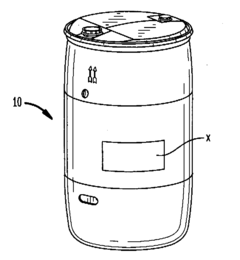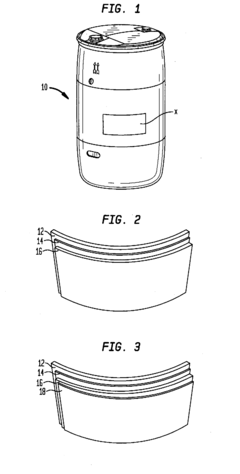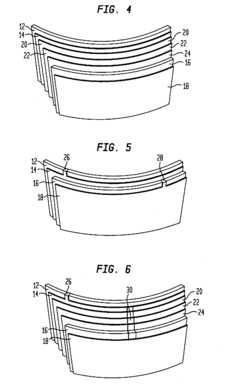How to Use HDPE in Electronics Casing Solutions?
HDPE in Electronics: Background and Objectives
High-Density Polyethylene (HDPE) has emerged as a promising material for electronics casing solutions, offering a unique combination of properties that address the evolving needs of the electronics industry. The use of HDPE in this context represents a significant shift from traditional materials, driven by the increasing demand for lightweight, durable, and cost-effective enclosures for electronic devices.
The evolution of HDPE in electronics casing can be traced back to the broader trend of plastic adoption in consumer electronics, which began in the mid-20th century. Initially, plastics were primarily used for aesthetic purposes and minor components. However, as manufacturing techniques improved and the properties of plastics were better understood, their use expanded to more critical applications, including structural components and protective casings.
HDPE, in particular, has gained attention in recent years due to its exceptional balance of mechanical strength, chemical resistance, and processability. Its low density, coupled with high impact resistance, makes it an ideal candidate for portable electronic devices that require both durability and lightweight design. Furthermore, HDPE's excellent electrical insulation properties align well with the safety requirements of electronic enclosures.
The objectives of incorporating HDPE into electronics casing solutions are multifaceted. Primarily, manufacturers aim to reduce the overall weight of devices without compromising on protection. This is particularly crucial in the era of mobile computing, where consumer preferences lean heavily towards sleek, lightweight devices. Additionally, HDPE offers potential cost savings in production, as it can be easily molded and requires less energy to process compared to some traditional materials.
Another key objective is to enhance the sustainability profile of electronic products. HDPE is recyclable and can be reprocessed multiple times without significant degradation of its properties. This aligns with the growing emphasis on circular economy principles within the electronics industry and addresses increasing regulatory pressures for more environmentally friendly product designs.
The technical challenges in adapting HDPE for electronics casing include improving its heat resistance, enhancing its surface finish for aesthetic appeal, and developing effective methods for integrating it with other materials and components. Researchers and engineers are actively working on modifications and composites that can overcome these limitations while preserving HDPE's core advantages.
As the electronics industry continues to evolve, with trends such as the Internet of Things (IoT) and wearable technology gaining momentum, the demand for versatile casing materials is expected to grow. HDPE's potential in this space is significant, and its development for electronics casing solutions represents a convergence of material science, industrial design, and environmental considerations.
Market Analysis for HDPE Electronics Casings
The market for HDPE (High-Density Polyethylene) in electronics casing solutions has been experiencing significant growth in recent years. This trend is driven by the increasing demand for durable, lightweight, and cost-effective materials in the electronics industry. HDPE offers several advantages that make it an attractive option for manufacturers and consumers alike.
One of the primary factors contributing to the market growth is the rising production of consumer electronics. As smartphones, tablets, laptops, and other portable devices become more prevalent, the need for protective casings has surged. HDPE's properties, such as high impact resistance, excellent chemical resistance, and low moisture absorption, make it an ideal material for these applications.
The automotive electronics sector is another key driver of the HDPE electronics casing market. With the increasing integration of electronic components in vehicles, there is a growing demand for robust and lightweight housing solutions. HDPE's ability to withstand harsh environmental conditions and its recyclability align well with the automotive industry's sustainability goals.
In the industrial electronics segment, HDPE casings are gaining traction due to their durability and resistance to corrosion. This is particularly important in sectors such as manufacturing, where electronic equipment is often exposed to challenging environments. The material's ability to protect sensitive components from dust, moisture, and chemicals has led to its increased adoption in industrial control systems and monitoring devices.
The telecommunications industry is also contributing to the market growth of HDPE electronics casings. As 5G infrastructure expands globally, there is a rising demand for weather-resistant enclosures for outdoor equipment. HDPE's UV resistance and thermal stability make it a suitable choice for protecting sensitive telecommunications hardware in various climatic conditions.
Geographically, Asia-Pacific is expected to dominate the HDPE electronics casing market. This is primarily due to the region's strong presence in electronics manufacturing, particularly in countries like China, Japan, and South Korea. The increasing adoption of smart devices and the rapid expansion of 5G networks in these countries are driving the demand for HDPE casings.
North America and Europe are also significant markets, with a focus on high-performance electronics and automotive applications. The stringent regulations regarding electronic waste management in these regions favor the use of recyclable materials like HDPE, further boosting its market potential.
However, the market faces challenges from alternative materials such as polycarbonate and ABS, which offer their own set of advantages in certain applications. Additionally, concerns about the environmental impact of plastics have led to increased scrutiny of HDPE usage. This has prompted manufacturers to focus on developing more sustainable production methods and improving recycling capabilities for HDPE products.
HDPE Casing Technology: Current State and Challenges
The current state of HDPE (High-Density Polyethylene) in electronics casing solutions presents both promising advancements and significant challenges. HDPE has gained traction in the electronics industry due to its excellent mechanical properties, chemical resistance, and cost-effectiveness. However, its adoption in high-end electronic devices remains limited.
One of the primary challenges is HDPE's inherent thermal properties. While it offers good insulation, its relatively low melting point (around 130°C) can be problematic for electronic devices that generate substantial heat. This limitation has led to ongoing research into heat-resistant HDPE formulations and composite materials that can withstand higher temperatures without compromising structural integrity.
Another significant hurdle is HDPE's limited electromagnetic shielding capabilities. In an era where electronic devices are increasingly sensitive to electromagnetic interference, this shortcoming has restricted HDPE's use in certain applications. Researchers are exploring various methods to enhance HDPE's EMI shielding properties, including the incorporation of conductive fillers and surface treatments.
The aesthetic appeal of HDPE casings also presents a challenge in the consumer electronics market, where sleek, premium-looking designs are often preferred. HDPE's typical matte finish and limited color options have led to innovations in surface finishing techniques and the development of HDPE blends that can mimic the appearance of more premium materials.
From a manufacturing perspective, HDPE offers advantages in terms of moldability and production efficiency. However, achieving tight tolerances and complex geometries required for modern electronic devices can be challenging with traditional HDPE processing methods. Advanced molding techniques and the integration of HDPE with other materials are being explored to overcome these limitations.
Sustainability is another key aspect driving innovation in HDPE casing technology. While HDPE is recyclable, improving its recyclability in electronic waste streams and developing more eco-friendly HDPE formulations are ongoing challenges. The industry is working on enhancing the material's end-of-life management and exploring bio-based HDPE alternatives to address environmental concerns.
Lastly, regulatory compliance poses a significant challenge, particularly in terms of fire safety standards for electronic devices. HDPE's flammability characteristics necessitate the use of flame retardants, which can impact the material's properties and recyclability. Developing HDPE formulations that meet stringent fire safety regulations without compromising other desirable properties remains a key focus area for researchers and manufacturers in the field.
Existing HDPE Casing Solutions for Electronics
01 Composition and properties of HDPE
High-Density Polyethylene (HDPE) is a thermoplastic polymer with a high strength-to-density ratio. It is characterized by its long linear chains with minimal branching, resulting in higher tensile strength, stiffness, and chemical resistance compared to other polyethylene types. HDPE's properties make it suitable for various applications, including packaging, pipes, and industrial products.- Composition and properties of HDPE: High-Density Polyethylene (HDPE) is a thermoplastic polymer with a high strength-to-density ratio. It is characterized by its long linear chains with minimal branching, resulting in higher tensile strength, stiffness, and chemical resistance compared to other polyethylene types. HDPE's properties make it suitable for various applications in packaging, construction, and automotive industries.
- HDPE blends and composites: HDPE can be blended with other materials or reinforced with fillers to enhance its properties. These blends and composites can improve mechanical strength, thermal stability, or specific functional characteristics. Examples include HDPE blended with other polymers, reinforced with natural fibers, or combined with nanoparticles to create materials with tailored properties for specific applications.
- HDPE processing techniques: Various processing techniques are used to manufacture HDPE products, including injection molding, extrusion, blow molding, and rotational molding. Each technique offers specific advantages for different product types and applications. Innovations in processing methods focus on improving efficiency, reducing cycle times, and enhancing the quality of the final products.
- Recycling and sustainability of HDPE: HDPE is highly recyclable, making it an environmentally friendly option for many applications. Recycling processes for HDPE involve collection, sorting, cleaning, and reprocessing into new products. Innovations in this area focus on improving recycling efficiency, developing new recycling technologies, and finding novel applications for recycled HDPE to promote circular economy principles.
- HDPE applications in various industries: HDPE finds applications in numerous industries due to its versatile properties. It is widely used in packaging for bottles, containers, and films. In construction, HDPE is used for pipes, geomembranes, and insulation. The automotive industry utilizes HDPE for fuel tanks and interior components. Other applications include medical devices, toys, and household products, showcasing the material's versatility and adaptability.
02 HDPE blends and composites
HDPE can be blended with other materials or reinforced with additives to enhance its properties. These blends and composites can improve characteristics such as impact resistance, thermal stability, or specific mechanical properties. The resulting materials find applications in areas where standard HDPE may not meet all requirements.Expand Specific Solutions03 HDPE processing techniques
Various processing techniques are used to manufacture HDPE products, including injection molding, extrusion, and blow molding. Each method offers specific advantages and is suited for different product types. Innovations in processing techniques aim to improve efficiency, reduce waste, and enhance the quality of HDPE products.Expand Specific Solutions04 Recycling and sustainability of HDPE
HDPE is recyclable, and efforts are being made to improve recycling processes and increase the use of recycled HDPE in new products. This includes developing methods for better sorting, cleaning, and reprocessing of HDPE waste. Sustainable practices in HDPE production and use are becoming increasingly important in the industry.Expand Specific Solutions05 HDPE applications in specific industries
HDPE finds applications in various industries due to its versatile properties. It is used in packaging, construction, automotive, and medical industries, among others. Specific applications include food packaging, water pipes, fuel tanks, and medical devices. Ongoing research focuses on expanding HDPE's use in new and innovative applications.Expand Specific Solutions
Key Players in HDPE Electronics Casing Industry
The market for HDPE in electronics casing solutions is in a growth phase, driven by increasing demand for durable and cost-effective packaging in the electronics industry. The global market size is expanding, with a projected CAGR of 5-6% over the next five years. Technologically, HDPE applications in electronics casings are maturing, with companies like Dow Global Technologies LLC, ExxonMobil Chemical Patents, Inc., and DuPont de Nemours, Inc. leading innovation. These firms are developing advanced HDPE formulations with improved thermal stability, flame retardancy, and impact resistance. Emerging players such as Kingfa Sci. & Tech. Co., Ltd. and LOTTE Chemical Corp. are also contributing to technological advancements, focusing on enhancing HDPE's properties for specific electronic applications.
Dow Global Technologies LLC
DuPont de Nemours, Inc.
Innovations in HDPE Formulation for Electronics
- A multilayer plastic container is produced using an extrusion blow molding process with at least one embedded electrically conductive HDPE layer, dividing the wall into thin insulating layers and a thin conductive layer, ensuring electrostatic charges are efficiently discharged through a conductive pathway without compromising mechanical stability or increasing costs.
- A foamable polymer composition comprising a polyolefin polymer, specifically linear low density polyethylene, combined with a blowing agent like citric acid or expandable polymeric microspheres, which allows for controlled foaming to enhance flexibility and tensile properties, thereby improving the cable's installation and durability.
Environmental Impact and Sustainability of HDPE Casings
The environmental impact and sustainability of HDPE (High-Density Polyethylene) casings in electronics applications is a critical consideration in today's eco-conscious market. HDPE, while offering excellent durability and protection for electronic devices, presents both challenges and opportunities in terms of environmental sustainability.
HDPE is derived from petroleum, a non-renewable resource, which raises concerns about its long-term sustainability. However, the material's durability and resistance to degradation contribute to extended product lifecycles, potentially reducing the frequency of electronic device replacements and associated waste. This longevity can indirectly mitigate environmental impact by decreasing the overall demand for new devices and their packaging.
One of the most significant environmental advantages of HDPE casings is their recyclability. HDPE is classified as a Type 2 plastic, making it widely accepted in recycling programs worldwide. When properly collected and processed, HDPE can be recycled multiple times without significant loss of quality, supporting a circular economy model. This recyclability helps reduce the amount of plastic waste entering landfills or the natural environment.
However, the recycling process itself is not without environmental implications. It requires energy and resources, potentially offsetting some of the environmental benefits. Additionally, the effectiveness of recycling depends heavily on consumer behavior and the availability of efficient recycling infrastructure, which can vary significantly across different regions.
The production of HDPE casings also has environmental considerations. The manufacturing process involves energy consumption and emissions, contributing to the product's carbon footprint. However, advancements in production technologies have led to more energy-efficient manufacturing processes, gradually reducing the environmental impact of HDPE production.
In recent years, there has been a growing trend towards incorporating recycled HDPE into new casings, further enhancing the material's sustainability profile. Some manufacturers are exploring blends of virgin and recycled HDPE to maintain the necessary physical properties while improving the overall environmental footprint of their products.
The end-of-life management of HDPE casings is another crucial aspect of their environmental impact. While HDPE is recyclable, ensuring that these casings actually enter the recycling stream rather than ending up in landfills or incineration facilities remains a challenge. This highlights the importance of consumer education and the implementation of effective take-back programs by electronics manufacturers.
Looking towards the future, research is ongoing into bio-based alternatives to traditional HDPE, which could potentially offer similar performance characteristics with a reduced environmental impact. These alternatives, derived from renewable resources, could address concerns about the petroleum-based origin of conventional HDPE while maintaining its beneficial properties for electronics casing applications.
Regulatory Compliance for HDPE in Electronics
The regulatory landscape for HDPE in electronics casing solutions is complex and multifaceted, requiring manufacturers to navigate a range of standards and compliance requirements. At the forefront of these regulations are safety standards, which are crucial for ensuring that HDPE-based casings do not pose risks to consumers or the environment.
One of the primary regulatory bodies overseeing the use of HDPE in electronics is the International Electrotechnical Commission (IEC). The IEC 62368-1 standard, which covers safety requirements for audio/video, information, and communication technology equipment, is particularly relevant for HDPE casings. This standard addresses issues such as fire resistance, electrical insulation, and mechanical strength, all of which are critical considerations for HDPE applications in electronics.
In addition to safety standards, environmental regulations play a significant role in the use of HDPE for electronics casings. The European Union's Restriction of Hazardous Substances (RoHS) directive limits the use of certain hazardous materials in electrical and electronic equipment. While HDPE itself is not restricted under RoHS, manufacturers must ensure that any additives or colorants used in the HDPE formulation comply with these regulations.
The Waste Electrical and Electronic Equipment (WEEE) directive is another important consideration for HDPE in electronics. This directive aims to promote the recycling and recovery of electronic waste. Manufacturers using HDPE in their products must consider end-of-life disposal and recycling options, potentially impacting the design and composition of their casings.
Electromagnetic compatibility (EMC) regulations also apply to HDPE casings in electronics. The IEC 61000 series of standards addresses electromagnetic emissions and immunity, requiring manufacturers to ensure that their HDPE casings do not interfere with the proper functioning of electronic devices or other nearby equipment.
For products intended for global markets, compliance with regional standards is essential. In the United States, the Federal Communications Commission (FCC) regulates electromagnetic emissions, while Underwriters Laboratories (UL) provides safety certifications. In Asia, countries like China and Japan have their own sets of standards and certification requirements for electronic products and materials.
Manufacturers must also consider industry-specific regulations. For instance, medical devices using HDPE casings may need to comply with additional standards set by regulatory bodies such as the FDA in the United States or the European Medicines Agency in the EU.
As sustainability becomes increasingly important, regulations around the recyclability and environmental impact of materials are evolving. The EU's Circular Economy Action Plan, for example, may lead to new requirements for the design and recyclability of electronic products, potentially affecting the use of HDPE in casings.


